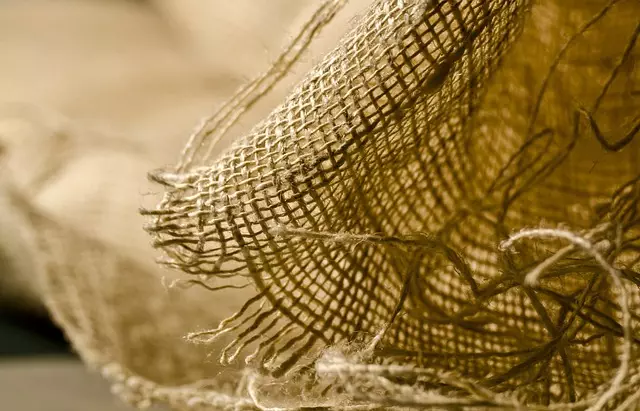Red Bali and Maeng Da are two distinct strains of Mitragyna speciosa, each with its own unique effects and alkaloid profiles. Red Bali, grown in the rich environments of Vietnam, is known for its sedative qualities and is often used to alleviate anxiety and physical discomfort due to its calming properties. Its drying process in Indonesia contributes to its maturation and potency. On the other hand, Maeng Da, also known as "Pimp's Blend," originates from Thailand and has a higher alkaloid content due to its unique drying method. It offers a blend of stimulating and soothing effects, making it suitable for those seeking both energy and relaxation. The differences between Red Bali and Maeng Da are primarily attributed to their cultivation methods and the varying levels of alkaloids, which determine their distinct effects. Users looking to incorporate Kratom into their wellness routine should consider these distinctions as they can significantly influence the experience. When choosing between Red Bali vs Maeng Da, it's important to select the strain that aligns with your specific needs, whether you're aiming for a relaxing and pain-relieving effect or a balanced energy and mood enhancement. Both strains are potent and have their own set of benefits, and understanding these will help you make an informed decision based on your wellness goals.
Embark on a journey through the diverse world of kratom leaves, where two distinct strains hold the spotlight: Red Bali and Maeng Da. This article delves into the unique attributes and effects of these botanicals, offering insights into their origins and uses. As you navigate “Red Bali vs Maeng Da,” prepare to uncover the subtle nuances that set each apart, enhancing your understanding of kratom’s rich tapestry. From the soothing properties of Red Bali to Maeng Da’s potent characteristics, discover the reasons behind their popularity and how they can be incorporated into your wellness practices. Join us as we explore the essence and benefits of these intriguing plant leaves, guiding you through an informed exploration of kratom’s diverse offerings.
- Unraveling the Distinctions: Red Bali vs Maeng Da Kratom Leaves
- The Essence of Red Bali Kratom: Effects, Origins, and Usage
- Exploring Maeng Da's Potency: A Deep Dive into Its Characteristics and Benefits
Unraveling the Distinctions: Red Bali vs Maeng Da Kratom Leaves

Red Bali and Maeng Da Kratom leaves, sourced from the verdant landscapes of Vietnam, represent two distinct strains within the Mitragyna speciosa family, each with its unique alkaloid profiles and effects. The Red Bali strain is renowned for its sedative properties, derived from the leaves’ maturity and drying process which occurs primarily in the Bali region of Indonesia. These leaves are known to induce a calming sensation, often sought after by individuals looking to unwind or cope with anxiety. In contrast, Maeng Da Kratom, also known as “Pimpakuak,” originates from the same species but is cultivated and processed differently in Thailand, resulting in a more potent alkaloid content. This strain is celebrated for its balanced effects, offering both stimulating and soothing properties, making it a versatile choice for users who require a balance between energy and tranquility. The distinction between Red Bali and Maeng Da lies not only in their geographical origins but also in the cultivation techniques and the alkaloid concentration that influences their unique effects. Users often report different experiences with each strain, emphasizing the importance of understanding these distinctions when considering Kratom for wellness purposes.
The Essence of Red Bali Kratom: Effects, Origins, and Usage

Red Bali Kratom, a variant of Mitragyna speciosa, is celebrated for its unique alkaloid profile that delivers a blend of stimulating and soothing effects. The leaves hail from the Indonesian island of Bali, where they are carefully harvested, dried, and packaged, often in capsule or powder form. Users frequently compare Red Bali to Maeng Da, noting differences in potency; while both strains offer analgesic properties, Red Bali’s effects are typically more sedating, making it a popular choice for those seeking relief from anxiety and stress as well as physical discomfort. Its influence is often described as a gentle wave of euphoria coupled with relaxation without the heaviness that can sometimes accompany other strains. The origins of Red Bali Kratom lie in its natural growing conditions, where the combination of soil composition, climate, and altitude contribute to the leaf’s characteristic effects. Users interested in exploring the benefits of Red Bali Kratom should consider the recommended dosage to ensure a safe and pleasant experience, as the effects can be quite pronounced compared to other kratom strains. The usage of Red Bali Kratom is prevalent among individuals looking for support during long workdays or for enhancing their focus and productivity in a calm state of mind, without the jittery sensations associated with more stimulating strains. It’s also a common choice for those winding down at the end of the day, seeking to promote better sleep quality.
Exploring Maeng Da's Potency: A Deep Dive into Its Characteristics and Benefits

Maeng Da Kratom, often referred to as “Pimp’s Blend,” is renowned for its potent effects and distinct characteristics that set it apart from other strains, such as Red Bali Kratom. This strain originates from the forests of Thailand and is prized for its invigorating properties. The leaves of Maeng Da undergo a unique drying process that concentrates its alkaloid content, contributing to its strength and long-lasting effects. Users often report a balance between energy and euphoria, making it a popular choice for those seeking both focus and mood enhancement. In comparison to Red Bali, which is also a potent strain known for its relaxing and pain-relieving properties, Maeng Da’s effects tend to be more stimulating and uplifting. The alkaloid profile of Maeng Da, including mitragynine and 7-hydroxymitragynine, is responsible for its distinct effects, which are often described as being more energizing and cerebral than Red Bali’s more sedating and pain-relieving characteristics. Users interested in exploring the benefits of Kratom should consider the specific strain and its unique alkaloid composition, such as the differences between Maeng Da and Red Bali, to tailor their experience to their wellness goals.
When delving into the world of Kratom leaves, particularly Red Bali versus Maeng Da, it becomes evident that each variety offers unique properties and effects. Red Bali Kratom is renowned for its calming influence, derived from the rich soils of Indonesia, while Maeng Da stands out for its balanced and potent benefits. For those seeking natural support for their well-being, understanding the nuances between these two strains is crucial, as red Bali vs Maeng Da comparisons often guide consumer choices. Ultimately, whether one prefers the soothing effects of Red Bali or the invigorating properties of Maeng Da, the choice depends on individual needs and preferences within the realm of Kratom usage. Both strains have their merits and continue to be a subject of interest for those exploring holistic options.






